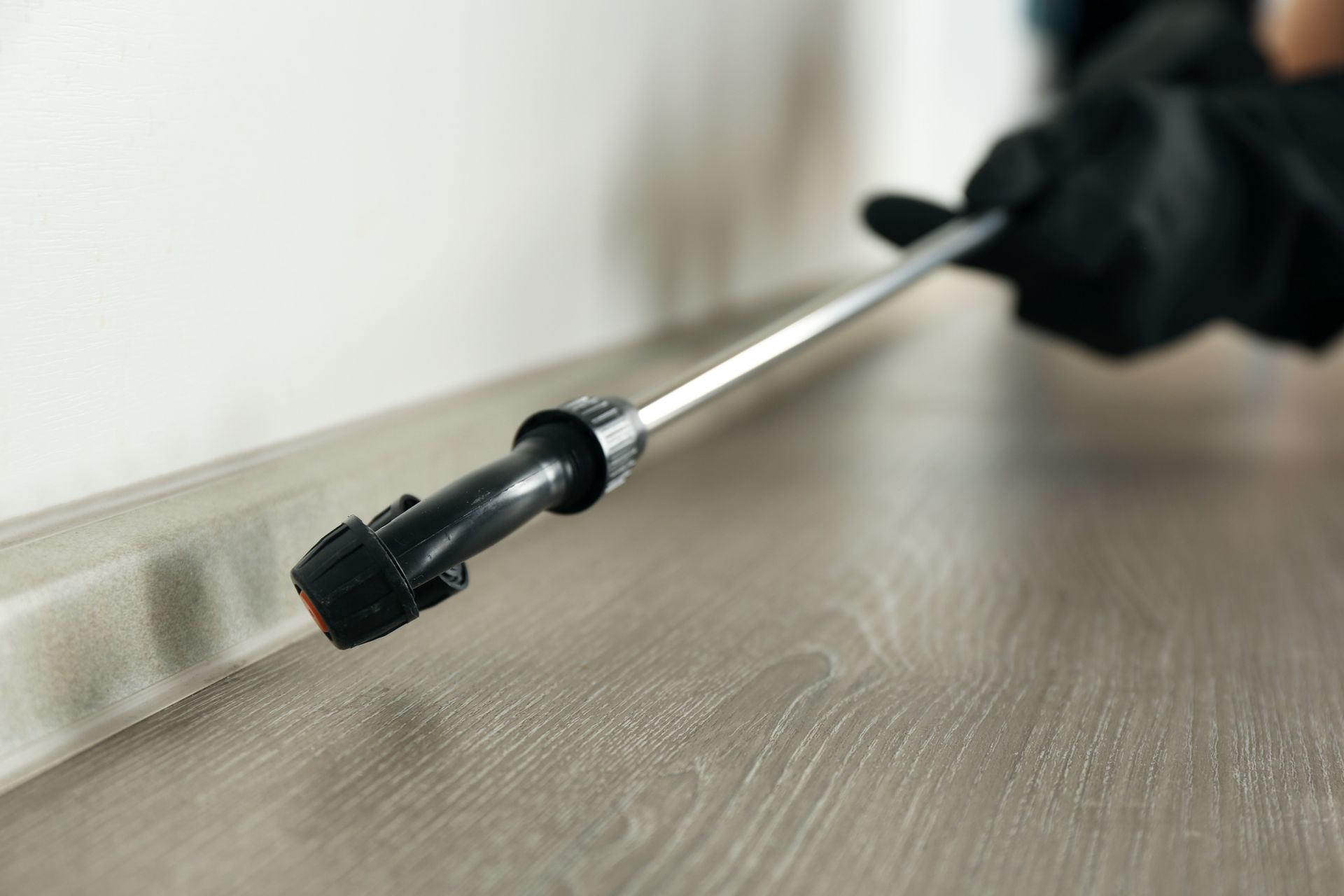Ant Control
Whether you have little, annoying, sweet ants that usually congregate in kitchens or bathrooms, or carpenter ants that can be destructive to a structure, Paffy’s Pest Control can eliminate these pests.
Sweet ants, the little brown ants, are not destructive, but they can be a nuisance, as can the pavement ant.
Paffy’s Pest Control
Paffy’s uses a granular spray to bait the ants. Once the spray dries, the ants are attracted to the bait and take it back to their colony. When it gets to the colony, the queen eats it and dies. Without the queen, the colony cannot reproduce and the whole colony is destroyed. Paffy’s takes care of the problem at the root. The same principle applies for the sweet ant colonies.
Understanding Common Ant Species in Minnesota and Wisconsin: Why Prompt Removal is Essential
Ants are among the most prevalent pests in homes and businesses across Southern Minnesota and Western Wisconsin, where Paffy's Pest Control operates. While ants play beneficial roles outdoors—such as aerating soil and aiding decomposition—they become a serious issue when they invade indoor spaces. In regions like Minneapolis/St. Paul and Alexandria, fluctuating seasons drive ants indoors seeking food, water, and shelter, leading to infestations that can damage property, contaminate food, and pose health risks. Below, we'll explore the most common types of ants encountered in these areas, based on local pest patterns, and explain why it's crucial to eliminate them promptly from your home or business.
Common Types of Ants in Minnesota and Wisconsin
Ant species vary in size, behavior, and habitat preferences, but many thrive in the Midwest's temperate climate. Here are the primary types that infest residential and commercial properties:
- Carpenter Ants (Camponotus pennsylvanicus) These large, black ants (up to 1/2 inch long) are one of the most destructive species in the region. They nest in moist or decaying wood, such as window frames, decks, or structural beams, excavating tunnels to create colonies. In Minnesota and Wisconsin, they're especially active in spring and summer, foraging indoors for sweets, meats, and grease. Unlike termites, they don't eat wood but chew through it, leaving behind sawdust-like frass. Risks include weakened building structures, which can lead to costly repairs if left unchecked.
- Pavement Ants Small and dark brown (about 1/8 inch), pavement ants are named for their habit of nesting under sidewalks, driveways, and foundations. They're extremely common in urban areas like St. Paul, entering homes and businesses through cracks in search of food crumbs. These ants form visible trails and can swarm indoors during warm weather. While not as destructive as carpenter ants, they contaminate surfaces and food, and their mounds can damage lawns or pavement.
- Odorous House Ants (Tapinoma sessile) These tiny brown ants (1/16 to 1/8 inch) emit a rotten coconut-like smell when crushed, hence their name. Prevalent in Wisconsin and Minnesota, they nest in mulch, under debris, or indoors near moisture sources like kitchens and bathrooms. They form supercolonies with multiple queens, allowing rapid population growth. Attracted to sweets, they contaminate food and can invade in large numbers during rainy seasons, making them a nuisance in homes and food-service businesses.
- Pharaoh Ants Very small (1/16 inch) and yellowish, pharaoh ants are indoor specialists, thriving in warm, humid environments like hospitals, restaurants, and apartments. In Minnesota and Wisconsin, they're often introduced via infested goods. They nest in walls, behind baseboards, or in appliances, and their colonies can split and spread quickly if disturbed. These ants carry bacteria, contaminating sterile areas, and are linked to asthma triggers in sensitive individuals.
- Thief Ants Tiny (1/16 inch) and pale yellow to brown, thief ants earn their name by stealing food and larvae from other ant colonies. They infest homes and businesses in the Midwest, nesting near heat sources like ovens or hot water pipes. Attracted to greasy foods, they contaminate pantries and can spread indoors rapidly. Their small size allows them to enter sealed packages, posing risks in commercial kitchens or warehouses.
- Field Ants (Formica spp.) Larger (up to 1/4 inch) and reddish-brown, field ants build mound nests in lawns, fields, or under rocks, sometimes entering structures. Common in rural areas of Southern Minnesota and Western Wisconsin, they defend territories aggressively and can bite or spray formic acid, causing skin irritation. While primarily outdoor pests, they forage indoors for sweets during summer.
- Cornfield Ants (Lasius alienus) Small and brownish-yellow (1/8 inch), these ants nest in thinning lawns or bare soil, creating small mounds. In Minnesota, they're often found in yards but can enter homes seeking moisture. They farm aphids for honeydew, indirectly promoting plant pests, and their mounds disrupt landscaping in residential or commercial properties.
Why It's Important to Remove Ants from Your Home or Business
Ignoring an ant infestation can lead to escalating problems that affect health, safety, and finances. Here's why prompt removal is critical:
- Structural and Property Damage: Species like carpenter ants excavate wood, weakening foundations, walls, and roofs. Over time, this can result in thousands of dollars in repairs, especially in older buildings common in Minnesota and Wisconsin.
- Food Contamination and Health Risks: Ants trail through unsanitary areas, spreading bacteria like Salmonella or E. coli to countertops, pantries, and stored goods. In businesses such as restaurants or warehouses, this violates health codes and risks customer safety. Some ants, like pharaoh ants, exacerbate allergies or asthma.
- Rapid Population Growth: Ant colonies can expand quickly, with queens producing hundreds of eggs daily. What starts as a few scouts can become a full infestation, making DIY methods ineffective and allowing spread to neighboring areas.
- Bites, Stings, and Irritation: While most local ants don't sting aggressively, field ants can bite and spray acid, causing pain or allergic reactions. In homes with children or pets, this poses additional hazards.
- Business Reputation and Compliance: For commercial properties, visible ants can deter customers, lead to negative reviews, and result in regulatory fines. In sectors like healthcare or food service, pest-free environments are mandatory for safety and reputation.
- Prevention of Larger Issues: Ants attract other pests, like spiders or rodents, and untreated infestations can signal underlying moisture problems that lead to mold or further damage.
At Paffy's Pest Control, we understand these risks and offer eco-friendly, low-toxicity treatments tailored to residential and commercial needs. Our Three-Season Home Service Plan provides preventive care with spring, summer, and fall treatments, including free return visits, while commercial plans minimize disruption with customized schedules. If you're spotting ants or signs like trails or frass, contact us for a consultation—early intervention keeps your space safe and pest-free.
Frequently Asked Questions
Source: insectidentification.org.















